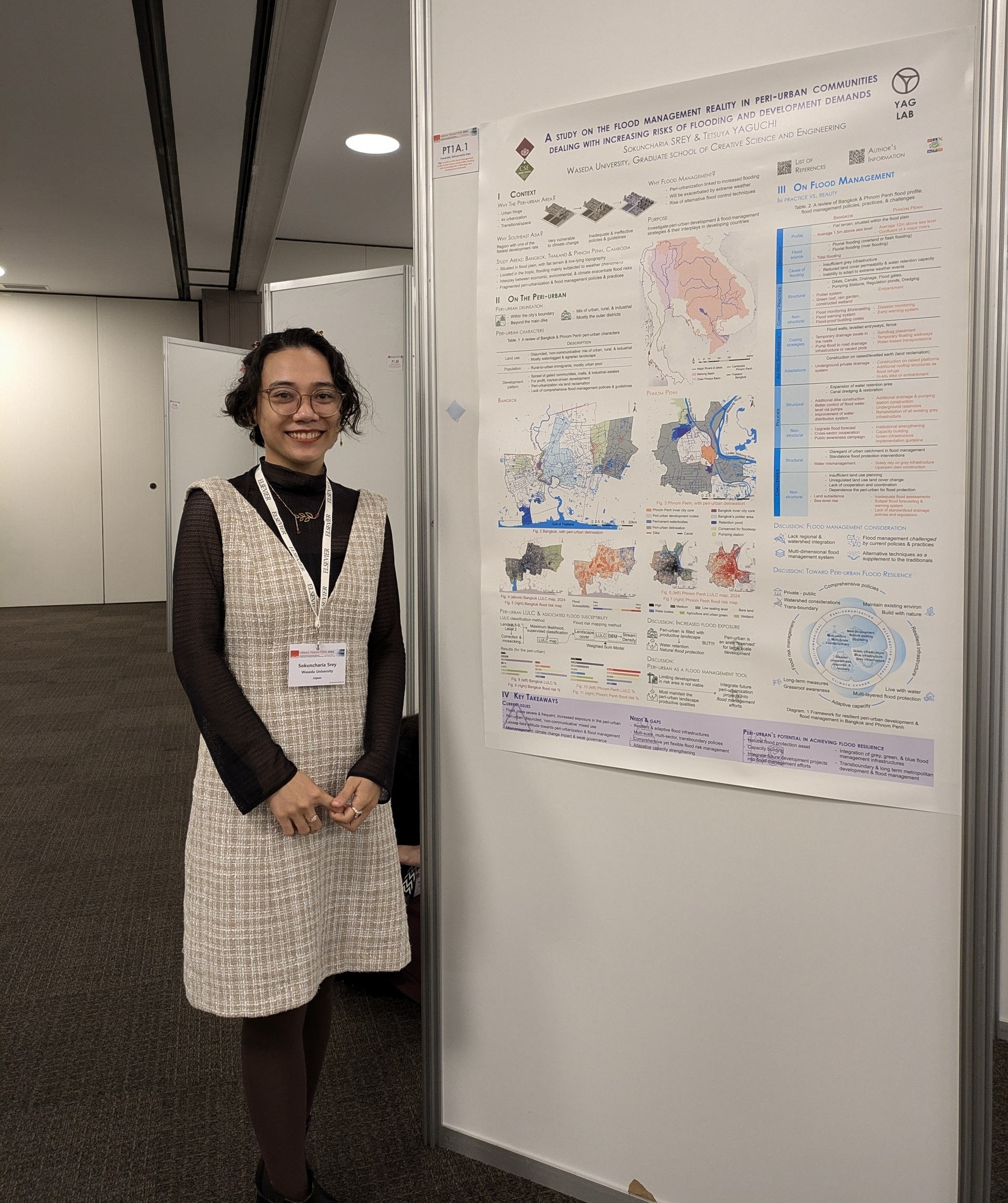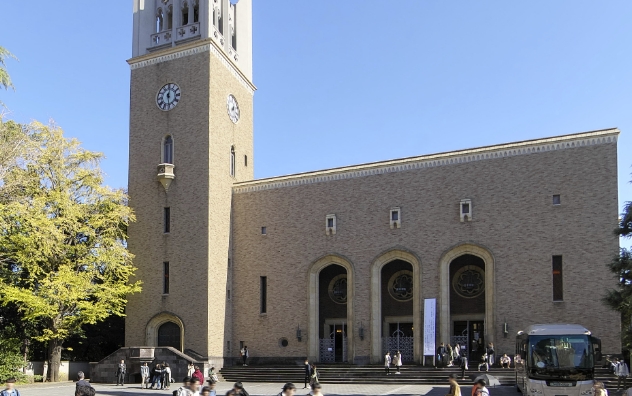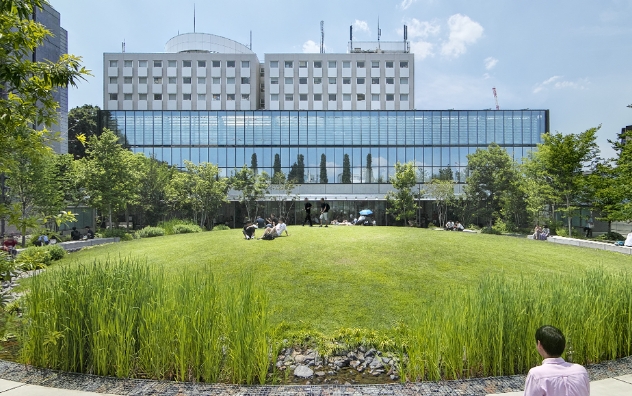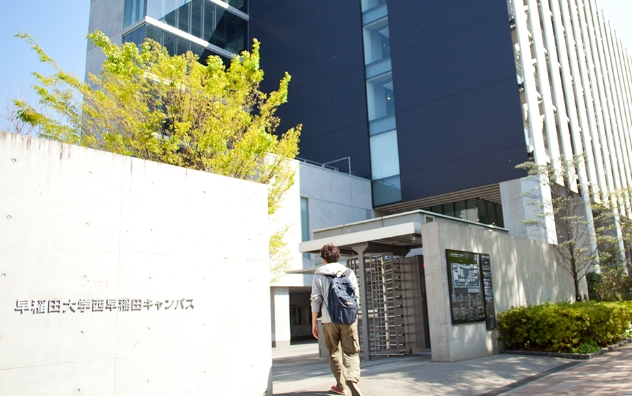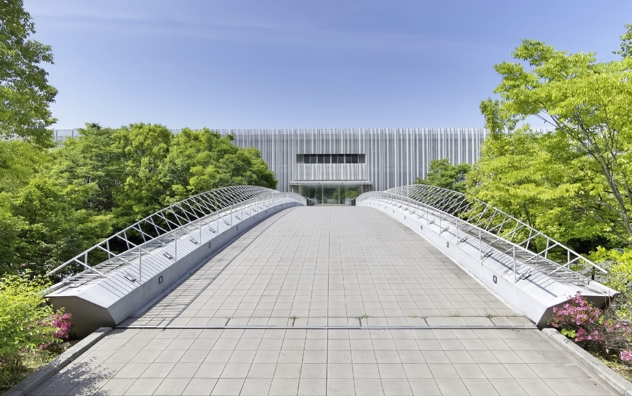From Waseda to the World: A Doctoral Student’s Journey to an International Academic Conference
Mon, Dec 2, 2024-
Tags
Members of Yaguchi Lab in the Department of Architecture, Graduate School of Creative Science and Engineering, Waseda University, are required to present at conferences in order to obtain a doctoral degree. As such, I, a third year Ph.D. student, joined my 2nd conference, Urban Transitions 2024 by the open access publisher Elsevier, as a poster presenter.
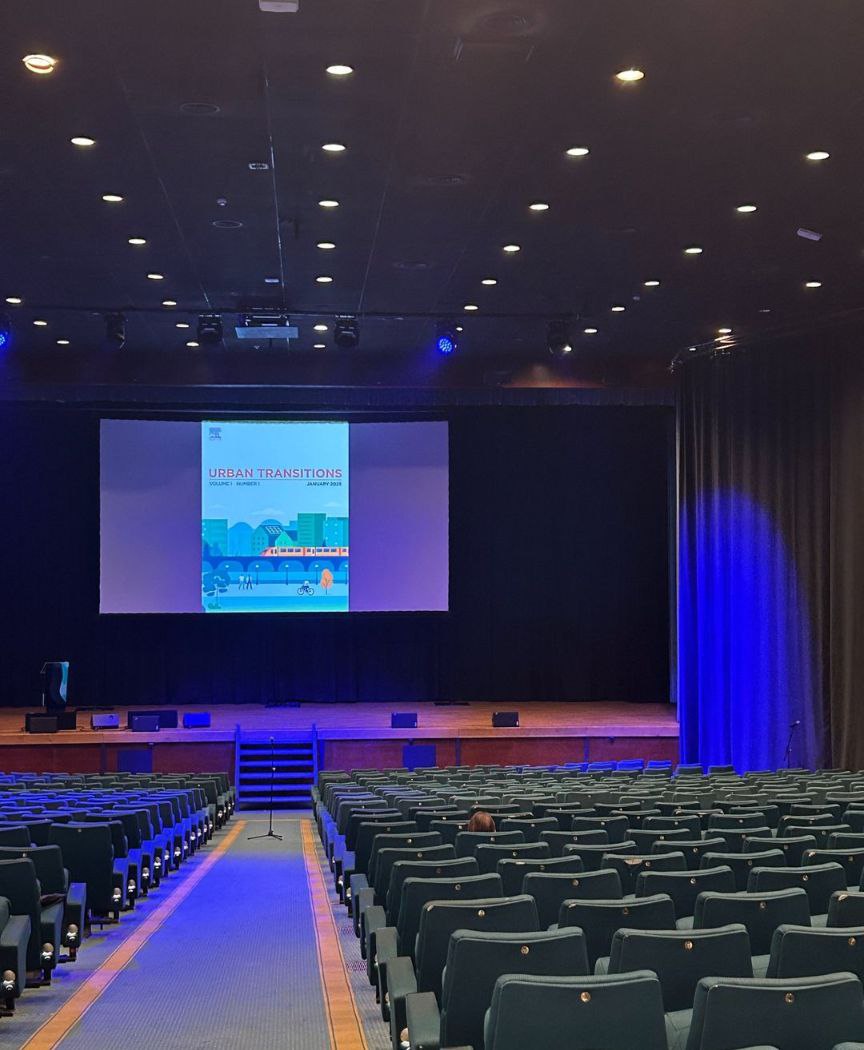
The conference was held from November 5th to the 7th in Sitges, a cozy beach town not too far from Barcelona, Spain. Conference topics included concepts and frameworks of cities, the city’s impact on health, nature-based solutions, justice and inequality in cities and urban practices, as well as engagement and education related to urban development. It was an eclectic mix with an even wider scope and as a doctoral student investigating flood management in the peri-urban context, I thought it was the perfect melting pot to which I can add results to and extract learnings from.
This was not my first conference presentation but it was my first experience with poster presentation and, as with all new experiences, there were hurdles and rewards and I am here to share my experience as a Waseda student who had the chance to communicate my research to an international audience and learn from a diverse set of experts and like-minded researchers.
Prepping for the presentation
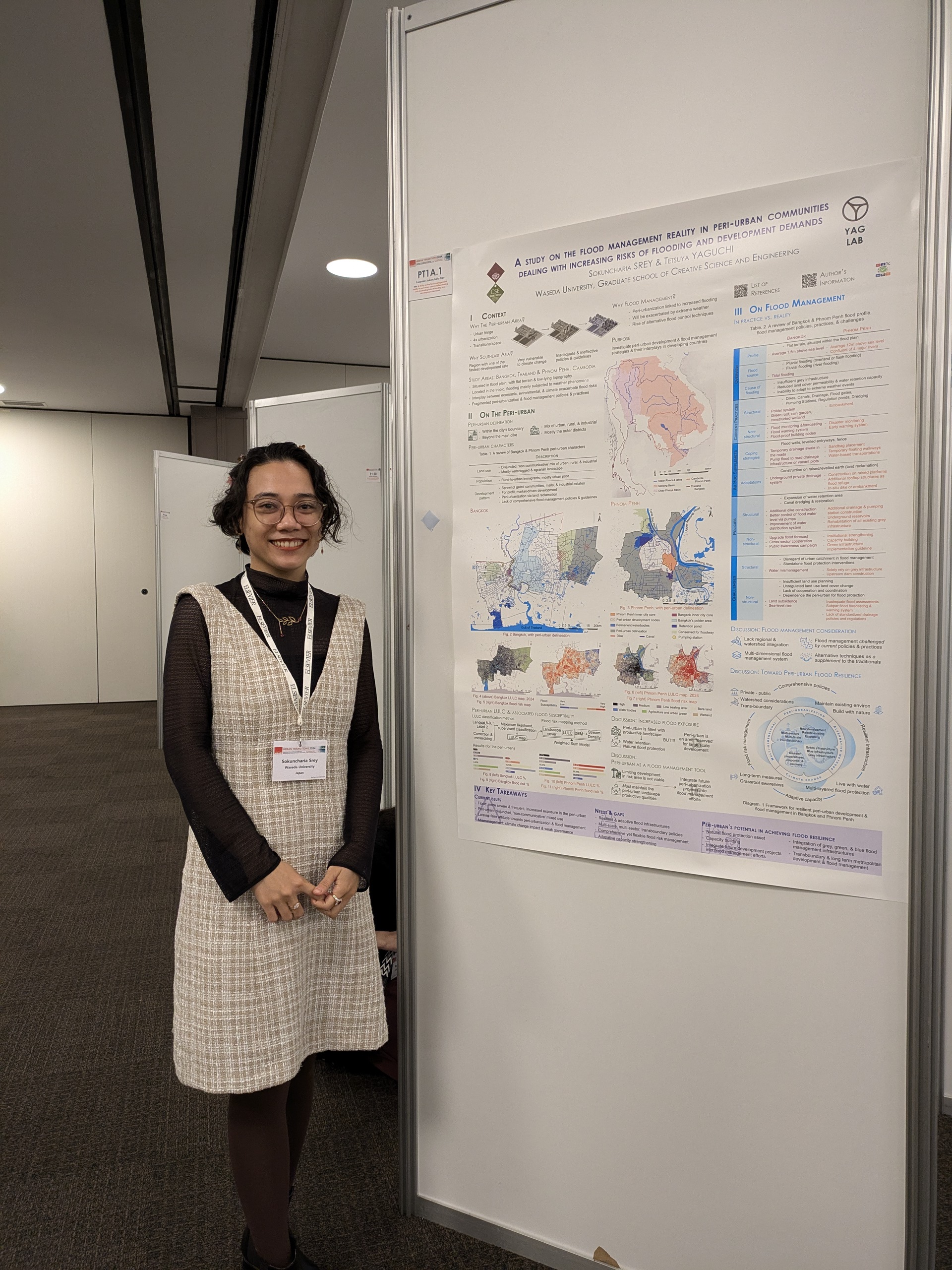
As a poster presenter, I was required to showcase my research on an A0 paper size panel and I was expected to be presenting for an hour. Additionally, I was also given the opportunity to conduct a three-minute, two-slide teaser presentation for my poster. The poster format was an unfamiliar presentation setup for me while the teaser was restricting and I struggled on what to include and how to effectively communicate my findings.
Fortunately, my professor calmed my nerves and helped me organize and structure the overall flow of the presentation and his keen eyes provided me with tailored feedback that whipped my content into shape. My friends at the lab also assisted in poster creation by providing suggestions on the composition and graphic choices as well as operating the large-format printing machine. (To those who are interested in learning more about large-format printing service at Waseda University, please visit here for more info! *Japanese only)
Besides the output, my professor also made sure I was of sound mind by checking up on me with increasing frequency as the conference date approached. Meanwhile, my friends kept me fed, watered, and motivated with kind words, delicious tea, and tastier food. As stress compounded, they kept me afloat and I must attribute my success at the conference to their efforts.
This is also why I love doing my Ph.D. at Waseda University: the community here is tight-knit, supportive, and considerate; the perfect environment for researchers to take root and blossom.
Picking up the tab
Securing funding is also a big aspect in presenting at a conference as there are registration fees as well as travel and accommodation expenses to worry about. As Waseda University students, however, we can take advantage of the Overseas Travel Research Grant Program. The program is available every semester and up to 110,000 yen is available to cover the costs of roundtrip airfare and accommodation. For those of us presenting at conferences, a part of the registration fee will also be covered separately; that’s another extra 55,000 yen to help alleviate financial stress.
It is not limited to conference presentations either. Students who are going on academic exchanges, participating in training or internship programs, or joining international workshops can also apply for this grant. Furthermore, upper-level bachelor’s and master’s students are also eligible. Even Waseda University students who are taking a leave of absence from university to participate in study abroad programs are also eligible! How neat is that?
For those who are interested in this grant, please consult your faculty. A quick discussion with your professor would probably yield additional funding options as well.
During the conference
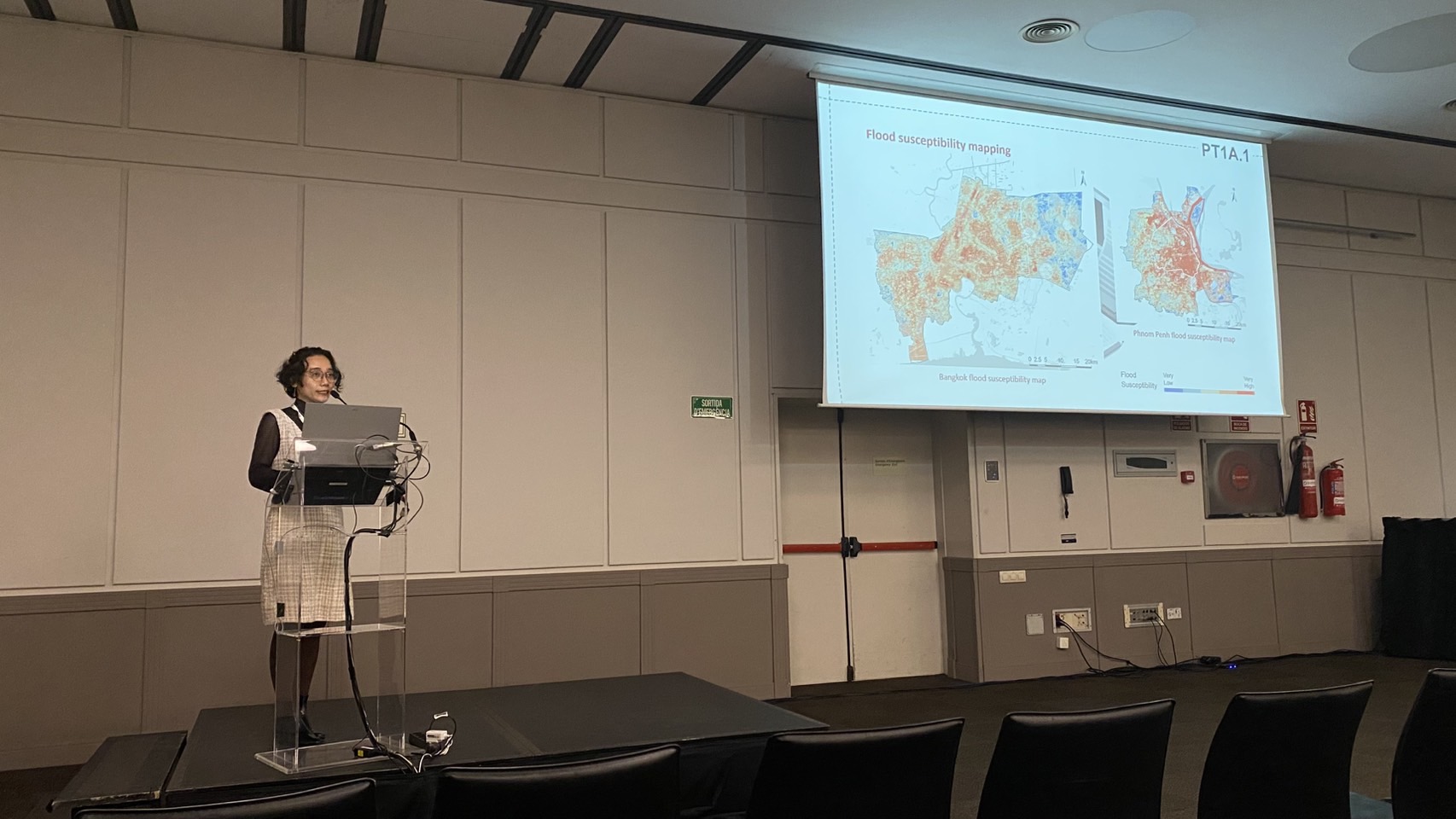
Although this was not my first conference, it was still a nerve-wracking experience as I had no prior exposure to giving teasers nor poster presentations. It turns out, the teaser presentation was a bit like a product demonstration of my findings while the poster presentation involved a lot of standing around and smiling, making myself available and open to conversation, which paid off because a lot of people not only read the poster but also engaged in discussions ranging from the nitty-gritty, technical elements to the overarching principles governing my research with me.
As to be expected, professors and educators questioned me on my research background, motivations, and the potential contributions of my findings, while fellow doctoral students shared tips and tricks on research methodologies, potential funding avenues, and inspiring words that keep me motivated. The most memorable encounters were that of a Thai researcher who shared his knowledge of the flooding situation in Bangkok with me and a Mongolian Ph.D. student who listened intently to my explanation. What was supposed to be only an hour extended to two and then three and I found myself returning to the poster section during the breaks between other sessions, engrossed in new discussions at every turn.
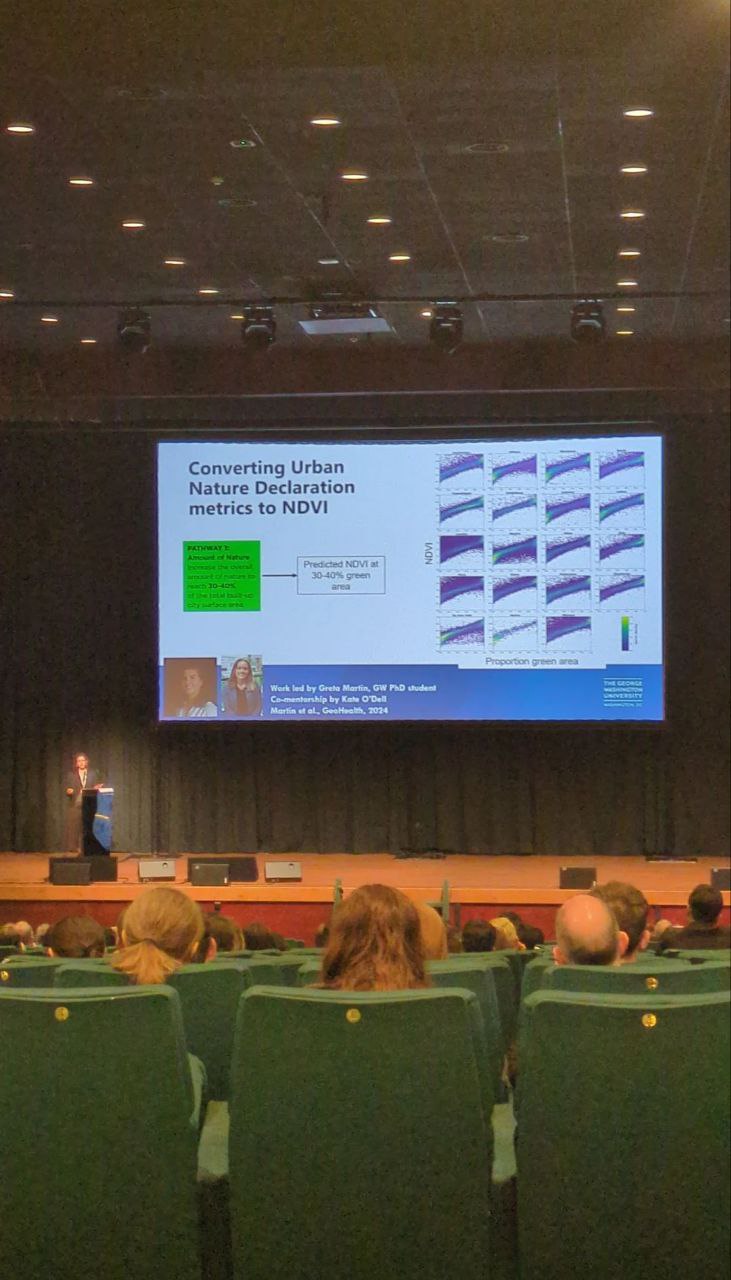
Nonetheless, going to a conference is never solely about presenting one’s research. It’s primarily about learning new things. And learn, I did. I took the opportunity to visit other posters after my session and listened to many oral presentations. I mostly focused my attention on the nature-based solutions and urban ecology as research in these topics aligned with my interest. However, I also ventured out of my research field and inserted myself into discussions on public health and educational engagement in urban planning as well as dipped my toes into the subject of policies and decision-making.
Overall, it was extremely pleasant and enriching; though I was reminded, once again, that there is so much left to learn and explore and that my investigation is just the tip of the iceberg.
Back to reality
In all honesty, the conference experience felt like a dream: the seemingly endless sleepless nights paid off with the successful presentation as well as the invaluable feedback and comments. Furthermore, the air was abuzz with debates and discussion, every corner of the venue overflowing with ideas and knowledge, different subject matter overlapping and coalescing, revealing new research angles and planting new ideas. Meanwhile, networking with other participants felt like a mini-vacation as I was able to befriend new faces and immerse myself in, not only knowledge and contact exchanges, but also cultural ones. It provided a much needed break from the grind of Ph.D. life.
I returned rejuvenated and ready to dive head first back into my research. Even though the conference has ended, I have no doubt of its effects on my work as I will be incorporating all the priceless suggestions and any relevant learnings to enhance my own research.
This article was written by the following Student Contributor:
Srey Sokuncharia


